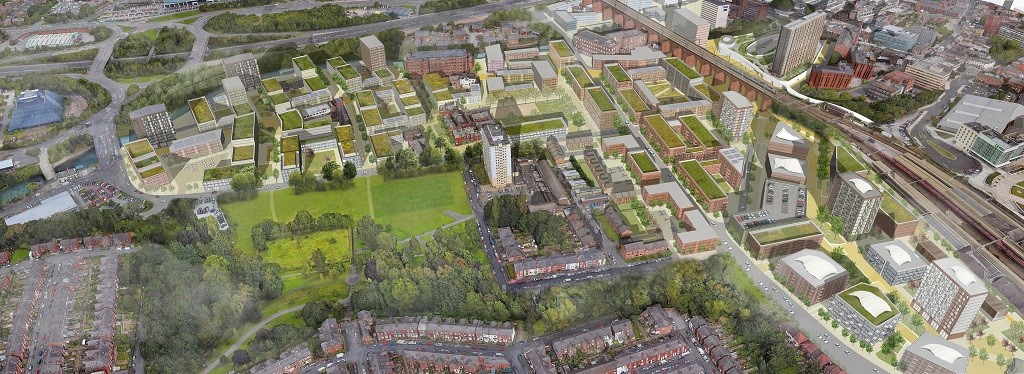On the 26
th October, the Ministry of Housing Communities and Local Government [MHCLG] launched a consultation
[1] on Development Corporation reform. It will seek to establish when it is appropriate for Development Corporations to be used and how legislative reforms might ensure that a fit-for-purpose model exists. The Government have simultaneously released guidance
[2] on a new ‘Development Corporation Competition’ that invites local authorities to apply for up to £10 million funding to ‘explore delivery models that have been less commonly used in a contemporary context, such as development corporations’. The MHCLG have set out that they are looking for up to 10 housing and economic growth opportunities with a regeneration focus.
The five established Development Corporations
Under current legislation, Development Corporations have the power to acquire (including compulsory purchase), develop, hold and dispose of land and property; as well as the ability to facilitate the provision of infrastructure, create businesses and subsidies, and offer financial assistance. The Localism Act (2011) allowed the Mayor of London to designate Mayoral Development Areas and establish Mayoral Development Corporations. Powers to establish Development Corporations were extended beyond London to England’s first Metro Mayors in 2017, and then again to locally-led new towns in 2018. The five active Development Corporations are set out below [Table 1].
Table 1: Established Development Corporations

Stockport Town Centre West
The ‘Stockport Town Centre West Mayoral Development Corporation (Establishment) Order 2019’ came into force on 2nd September 2019. The Stockport Mayoral Development Corporation [SMDC] is the first in the country to focus on town centre regeneration, with Stockport Council and the Greater Manchester Combined Authority proposing to deliver over 3,500 new homes in Stockport Town Centre West across a 52.6ha area.
Figure 1: Illustrative Vision for Stockport Town Centre West


Source: Stockport Council - Strategic Regeneration Framework
Challenges for Stockport Town Centre West
Delivering 3,500 new homes on predominantly brownfield land under the control of 500 landowners over the next 15-20 years is ambitious. The housing delivery achieved by Olympic Park Legacy Corporation [OPLC] and Old Oak and Park Royal Development Corporation [OOPRDC] in London [Table 2] does not provide means for encouragement, with neither delivering close to their adopted or emerging housing requirements. Outside of London, the only precedents are the South Tees Development Corporation [STDC] and Ebbsfleet Development Corporation [EDC], both of which serve very different purposes to the SMDC. The STDC is exclusively employment regeneration focussed and the EDC is a unique Development Corporation established with sole the purpose of delivering Ebbsfleet Garden City. Furthermore, by not assuming development management or plan making powers, there has been some doubt as to how SMDC can coordinate and deliver such an ambitious project.
Table 2: London Development Corporations Residential Delivery

Source: OPLC Housing Explanatory Note 2019 & OOPRDC Authority Monitoring Report 2018
Financing and Delivery
Most of the initial reservations over the Stockport Town Centre West project have been centred on how investment to deliver the vision set out in the Strategic Regeneration Framework
[3] [SRF], which includes a mix of market and affordable dwellings for families, young professionals and retirees across different density ‘neighbourhoods’, would be secured. However, on 1
st October, an Investment Strategy Facility Report
[4] [ISFR] was approved at the meeting of Stockport Council’s Cabinet. The ISFR sets out the Council’s investment objectives and options, as well as the preferred operating and delivery model for SMDC. In order to deliver the volume and mix of housing outlined in the SRF, clear overarching financial coordination and management will be required. To achieve this the ISFR sets out that SMDC will adopt a range of roles including; promoter, facilitator, direct developer and JV partner with developers.
To achieve the ambitious vision for the project, SMDC will have to make full use of the development and acquisitional powers afforded to it, whilst simultaneously levering in public and private sector investment. The ISFR states that that SMDC will utilise a variety of investment techniques to target commercial and regeneration opportunities. This could include gap funding, land acquisition funding, remediation investment, patient capital, feasibility funding and direct investment. The ISFR also clarifies that the decision not to assume planning functions was taken to ensure that SMDC focuses on leading regeneration through acquisition and development powers.
Conclusion
The launch of the ‘Development Corporation Competition’ and the Government’s consultation on their reform indicates that there will be an increasing emphasis on utilising Development Corporations to deliver regeneration schemes. Ultimately however, eight years since the rebirth of Development Corporations in the Localism Act, there remains an absence of evidence to suggest that they are the most effective mechanism to deliver either major redevelopment schemes or smaller town centre regeneration projects. Nevertheless, if Stockport Town Centre West, or a similar project conceived through the ‘Development Corporation Competition’, is successful it could represent a renewed purpose for Development Corporations as a tool for town centre regeneration.
[1] MHCLG – Development Corporation Reform [2] MHCLG – New Development Corporation Competition [3] Stockport Council – Stockport Town Centre West Strategic Regeneration Framework [4] Stockport Council - Stockport Mayoral Development Corporation Facility Main Report







